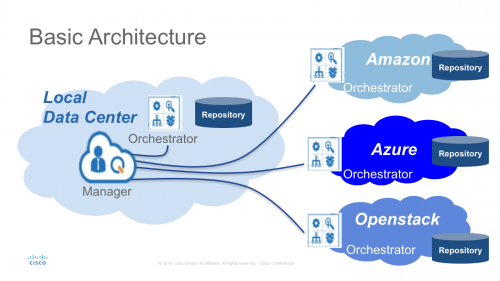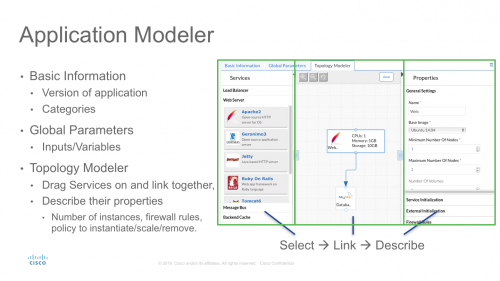
How to prepare meals at scale – Building Application Models in Cisco CloudCenter | Part1/4
Cooking a single dish for family and friends is no big deal. Even if the dish has more than one course, one can manage it in one or the other way. It is, however, a completely different story to be a chef and cook a variety of meals at the same time for dozens of customers. Serving the meals at the right time to the right customer makes it a professional business for a chef and their staff. And as a professional business it’s necessary to stay compliant in- and outside the kitchen.
Enterprise IT today has similar challenges: The menus are broad but applications are the centric piece. The number of dependencies for an application are rising, and with different kinds of customers and environments it is getting more complex. IT departments need to stay compliant in all lifecycle phases. It shouldn’t matter whether you deploy an application to local or remote tables. The cloud is the new focus and is becoming the new standard for many. Cisco CloudCenter enables you as the Chef in the preparation of complex menus, to stay within your rules, and always deliver the same quality to make your customers happy.
What is Cisco CloudCenter?
One of the major functionalities in CloudCenter is the capability to model cloud agnostic application profiles. The model enables consistency, cost prediction, multi-cloud software deployment and lifecycle management. Developers and operations can capture and document deployment requirements in the model. The created application profile is used deploy, maintain and delete the application during the application lifecycle while preserving infrastructure independency. Once modeled in CloudCenter, the application can be deployed to a variety of destination clouds (private and public) with no additional changes to the deployment process. This allows taking advantage of the new business agility today and in the future. This blog will take you through the process of modeling an application followed by real world examples.
The Kitchen
Cisco CloudCenter Architecture
We firstly need to prepare the basics of our recipe list. What does your kitchen provide regarding ingredients, tools and workers to prepare your dish? We also need to prepare an applications deployment for multiple cloud destinations. We are using CloudCenter as our kitchen to prepare the application deployment.
The basic architecture of CloudCenter consists of:
- One CloudCenter Manager (CCM): the graphical user interface to do all administration and configuration work
- One or more CloudCenter Orchestrators (CCO), which configures a given target cloud. In the cloud deployment process a target cloud is selected. There are Orchestrators available for private and public clouds such as VMware, Amazon AWS, Microsoft Azure, OpenStack and many others.
- A repository where all required artifacts (such as scripts, binaries etc.) for the deployment can be downloaded.
To build a sufficient cloud agnostic application profile, we need to understand the building blocks. The profile consists of services, packages, artifacts and the model itself.
- The service defines an application tier (e.g. web server, database server, load balancer, firewall, etc).
- Services are packages and customized using artifacts that can consist out of scripts, code snippets and application binaries.
- The Model is an application profile for cloud agnostic deployments comprised of one or more services.
All elements are used to build an application profile through the Application Modeler in CloudCenter Manager.
The model includes versioning, service catalog categories, required input parameters for the deployment, descriptions, icons and dependencies. The visual topology modeler can combine application tiers using drag and drop. The customization is already included in the service or can be done manually by the application designer.
This is the end of the introduction. Part1 summarizes the basic toolset inside of CloudCenter for multi-cloud application deployment. This is not all, having a great kitchen with good working tools will certainly help. A detailed cooking plan and the ingredients are still needed to get a meal with astonishing taste. Read more about it in Part 2 of the series.
I’d like to thank sous-chefs Ralf Antweiler and Sebastian Straube who helped a lot in the mise en place for this Blog series.
Tags:




